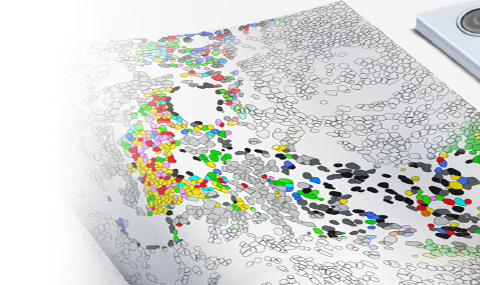Allogeneic hematopoietic stem cell transplantation (HSCT) is used in the treatment of hematological malignancies as well as non-malignant hematopoietic disorders. In HSCT, hematopoietic stem cells are transferred from a donor to a recipient to reconstitute the recipient’s hematopoietic and immune systems. Among patients undergoing allogenic transplantation, 30%-70% will develop acute graft versus host disease (GVHD), in which donor T cells attack host organs, most predominantly the skin, gastrointestinal tract and the liver. We use multiplexed imaging to unravel the immune phenotype, activation and organization in acute GVHD. By analyzing GI and skin biopsies from individuals with acute GVHD, we hope to understand the immunological mechanisms involved in mounting the acute immune at different anatomical locations.



